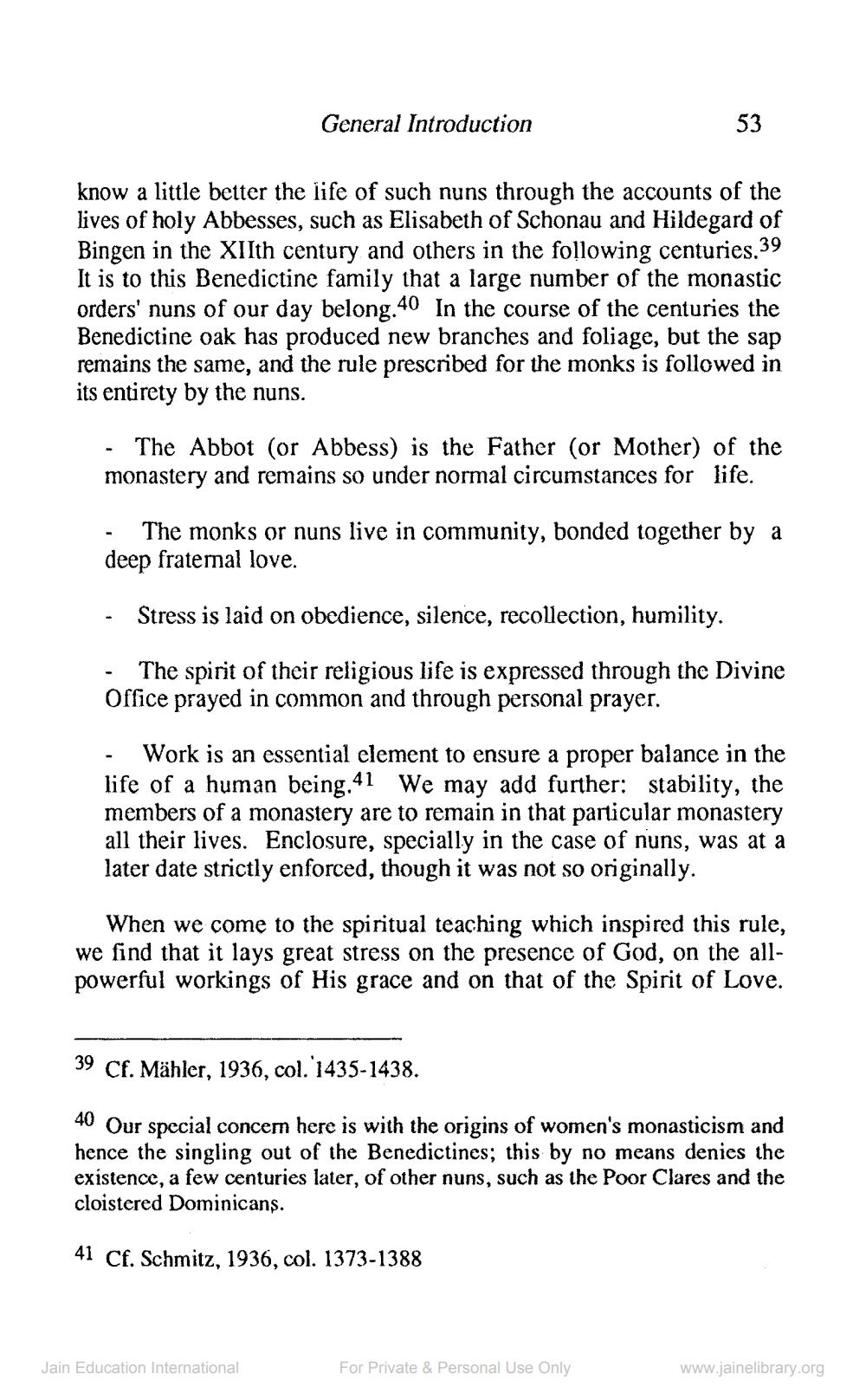________________
General Introduction
know a little better the life of such nuns through the accounts of the lives of holy Abbesses, such as Elisabeth of Schonau and Hildegard of Bingen in the XIIth century and others in the following centuries.39 It is to this Benedictine family that a large number of the monastic orders' nuns of our day belong.40 In the course of the centuries the Benedictine oak has produced new branches and foliage, but the sap remains the same, and the rule prescribed for the monks is followed in its entirety by the nuns.
- The Abbot (or Abbess) is the Father (or Mother) of the monastery and remains so under normal circumstances for life.
- The monks or nuns live in community, bonded together by a deep fraternal love.
- Stress is laid on obedience, silence, recollection, humility.
- The spirit of their religious life is expressed through the Divine Office prayed in common and through personal prayer.
- Work is an essential element to ensure a proper balance in the life of a human being.41 We may add further: stability, the members of a monastery are to remain in that particular monastery all their lives. Enclosure, specially in the case of nuns, was at a later date strictly enforced, though it was not so originally.
When we come to the spiritual teaching which inspired this rule, we find that it lays great stress on the presence of God, on the allpowerful workings of His grace and on that of the Spirit of Love.
39 Cf. Mähler, 1936, col. 1435-1438.
40 Our special concem here is with the origins of women's monasticism and hence the singling out of the Benedictines; this by no means denies the existence, a few centuries later, of other nuns, such as the Poor Clares and the cloistered Dominicans.
41 Cf. Schmitz, 1936, col. 1373-1388
Jain Education International
For Private & Personal Use Only
www.jainelibrary.org




